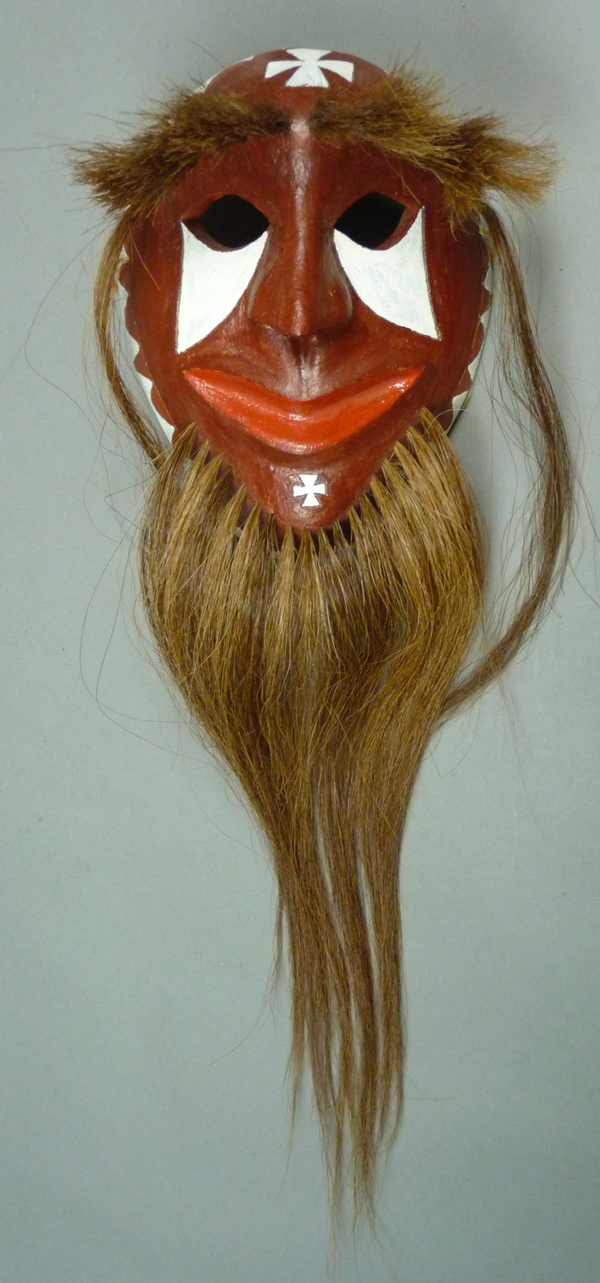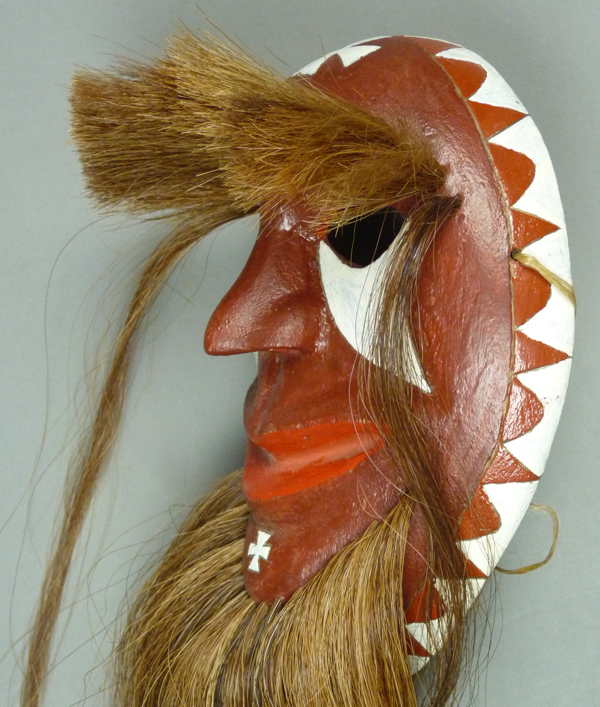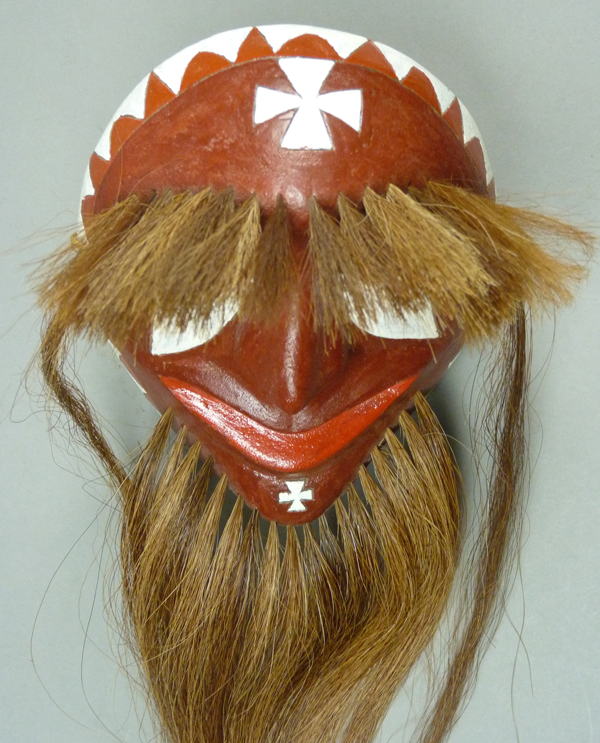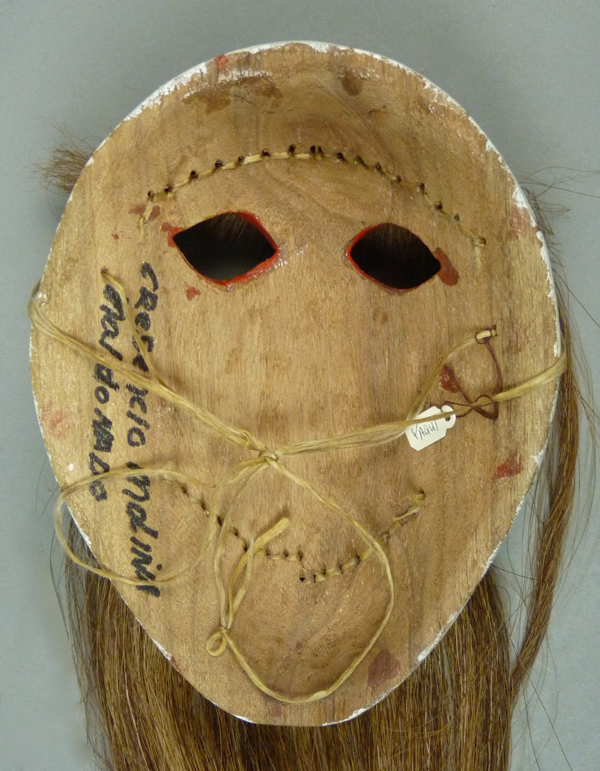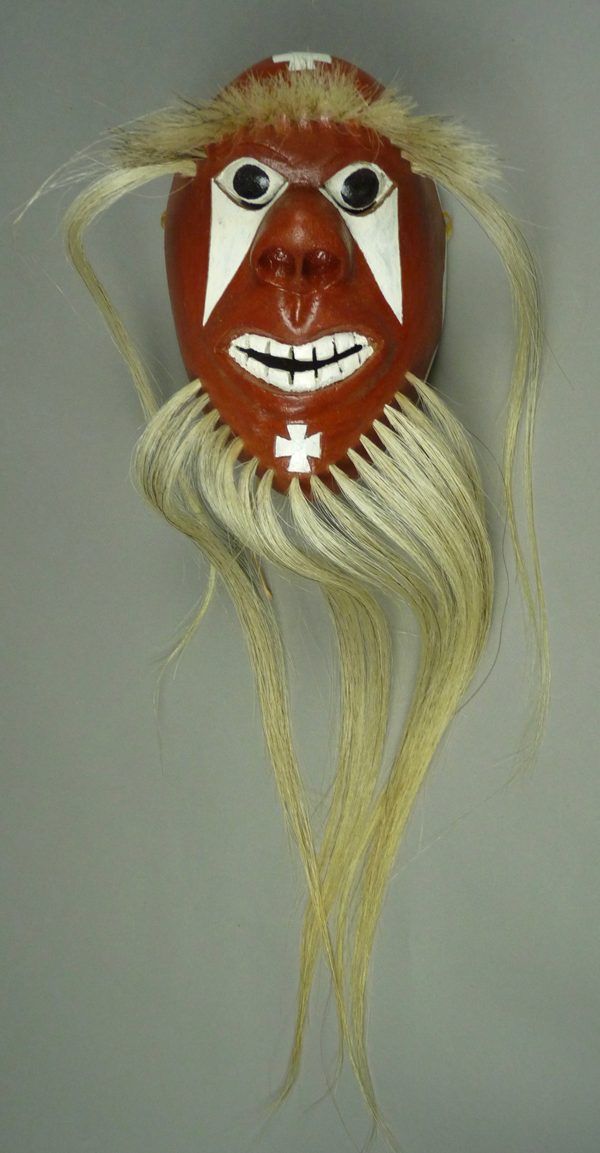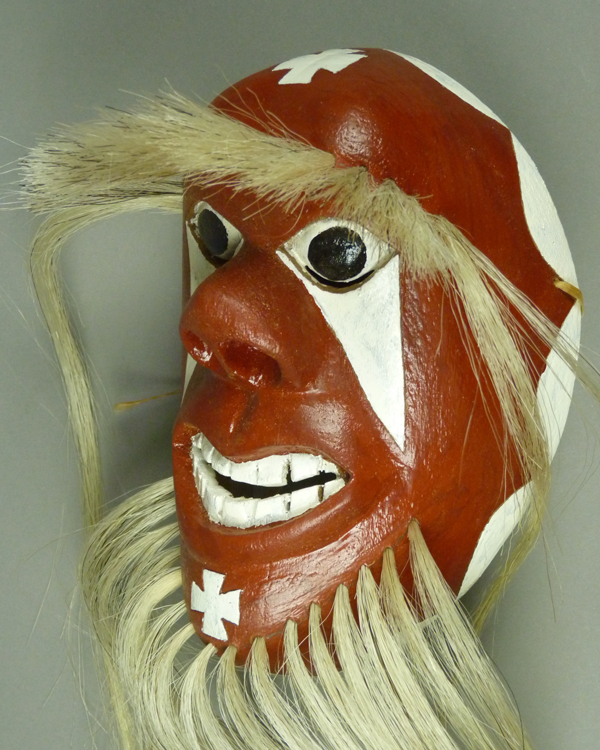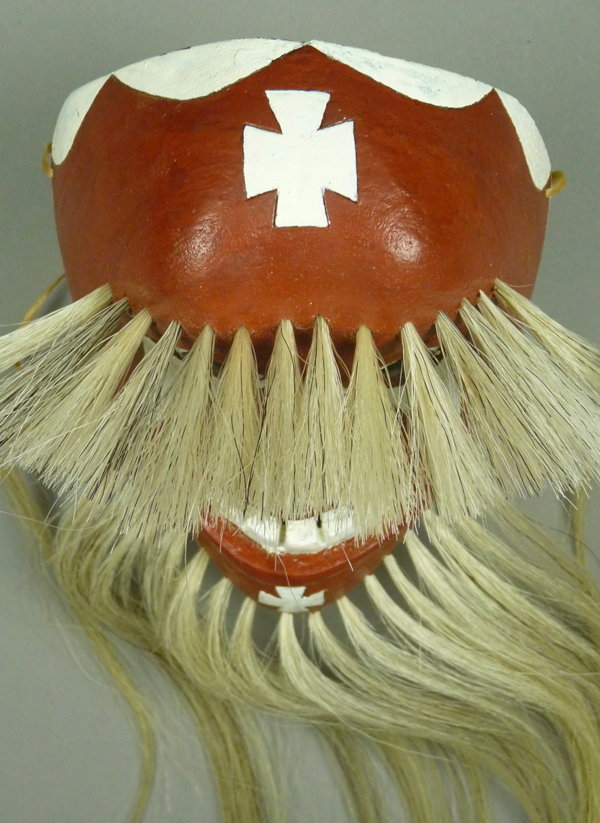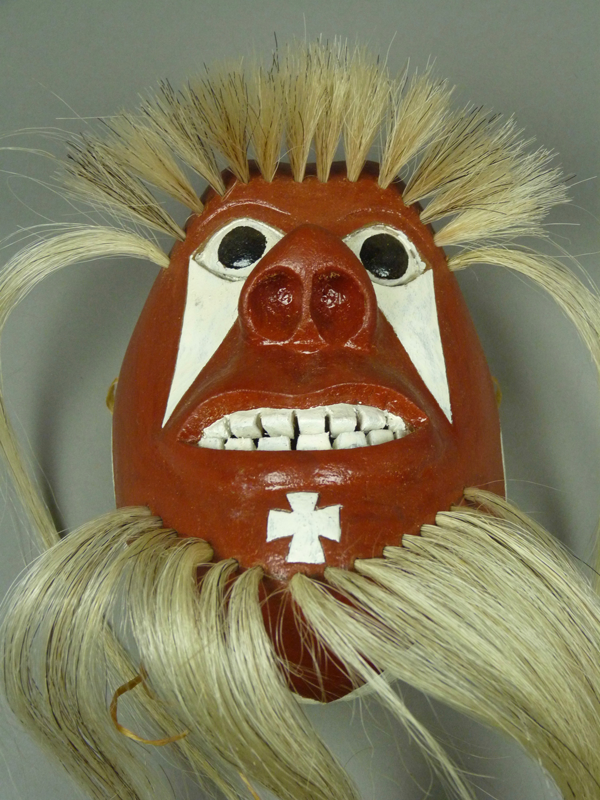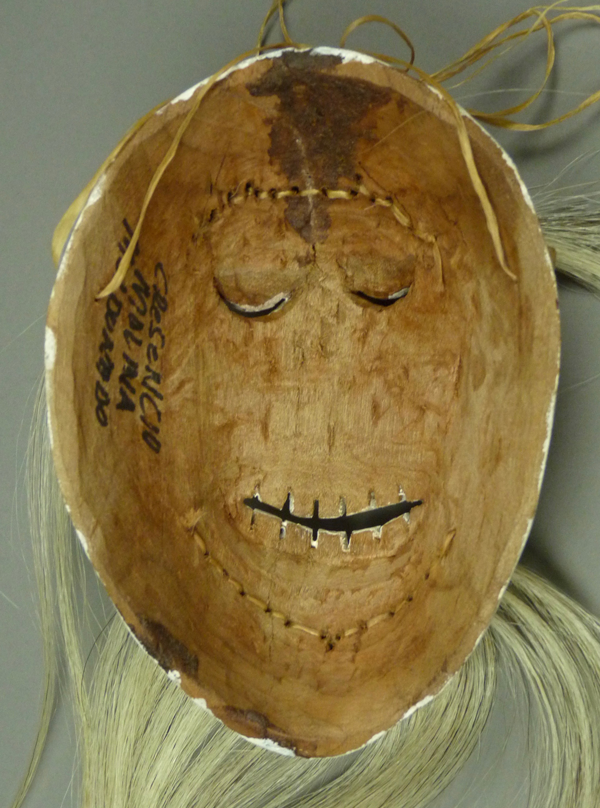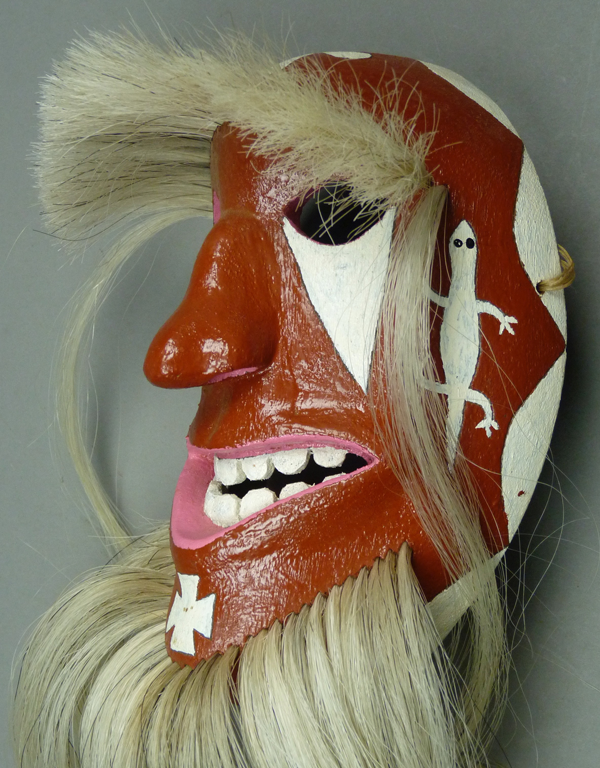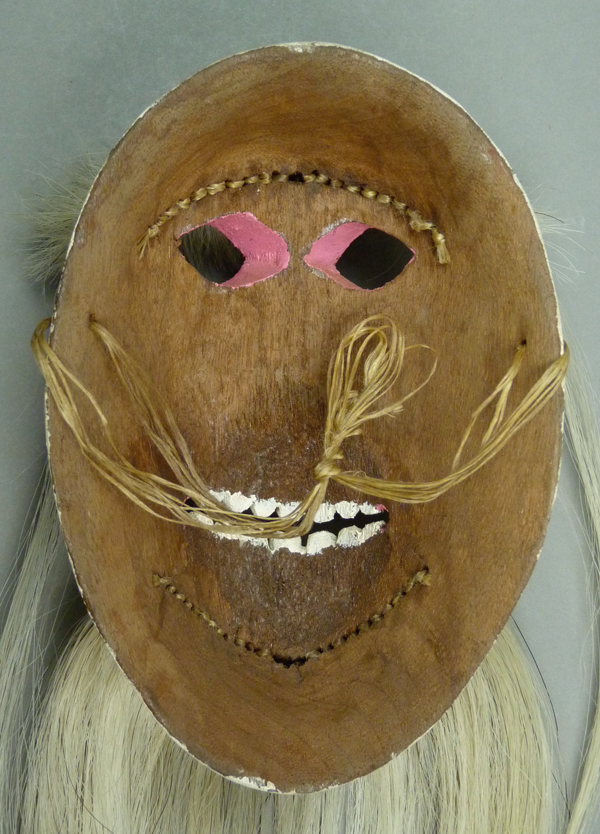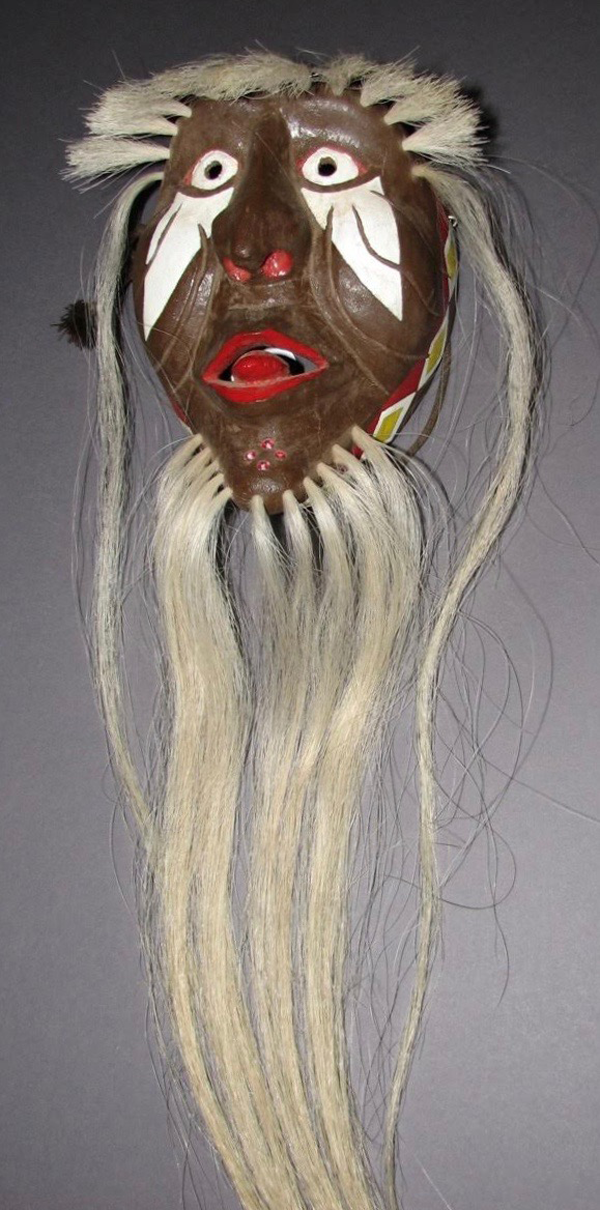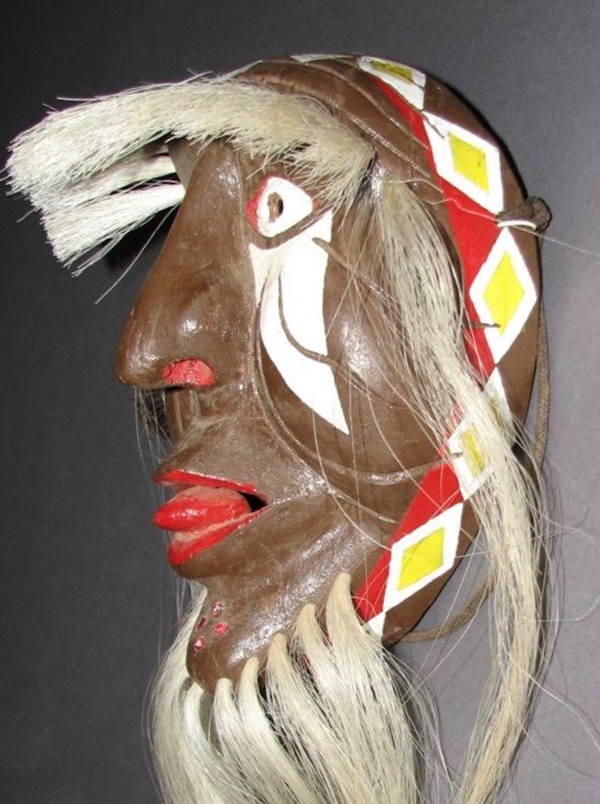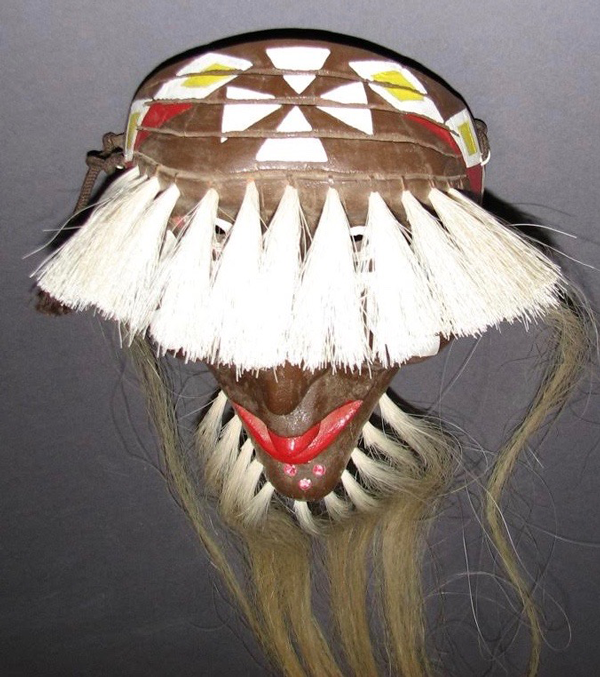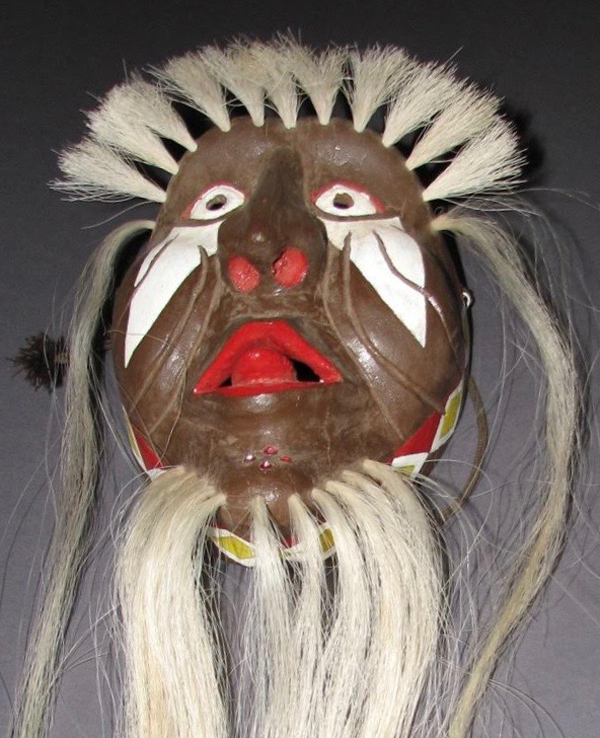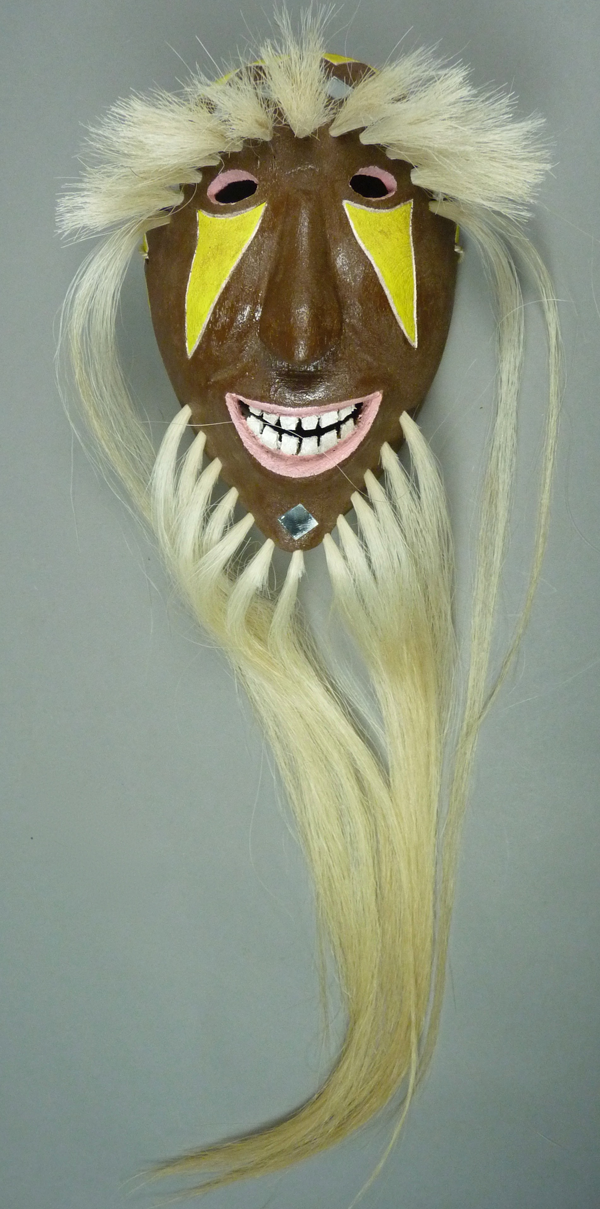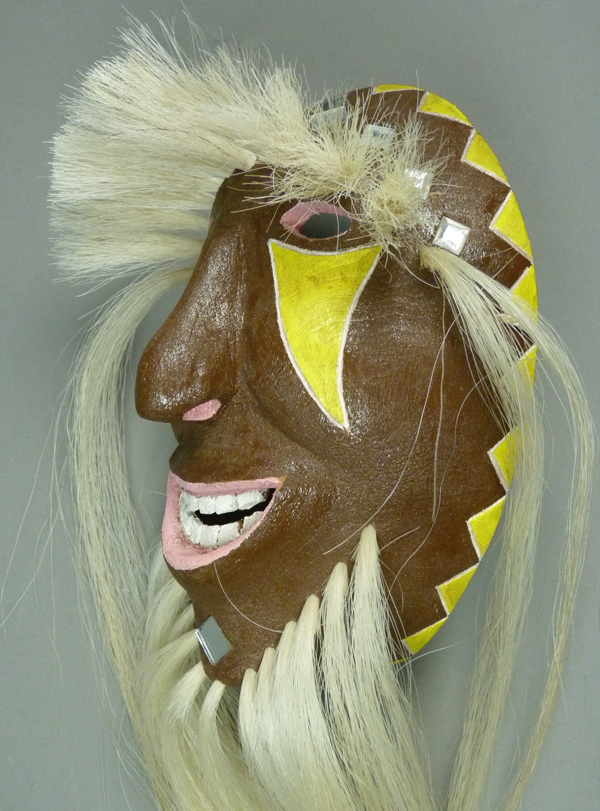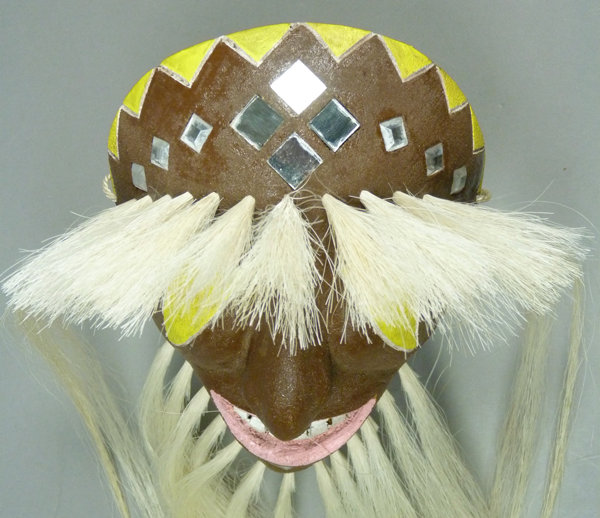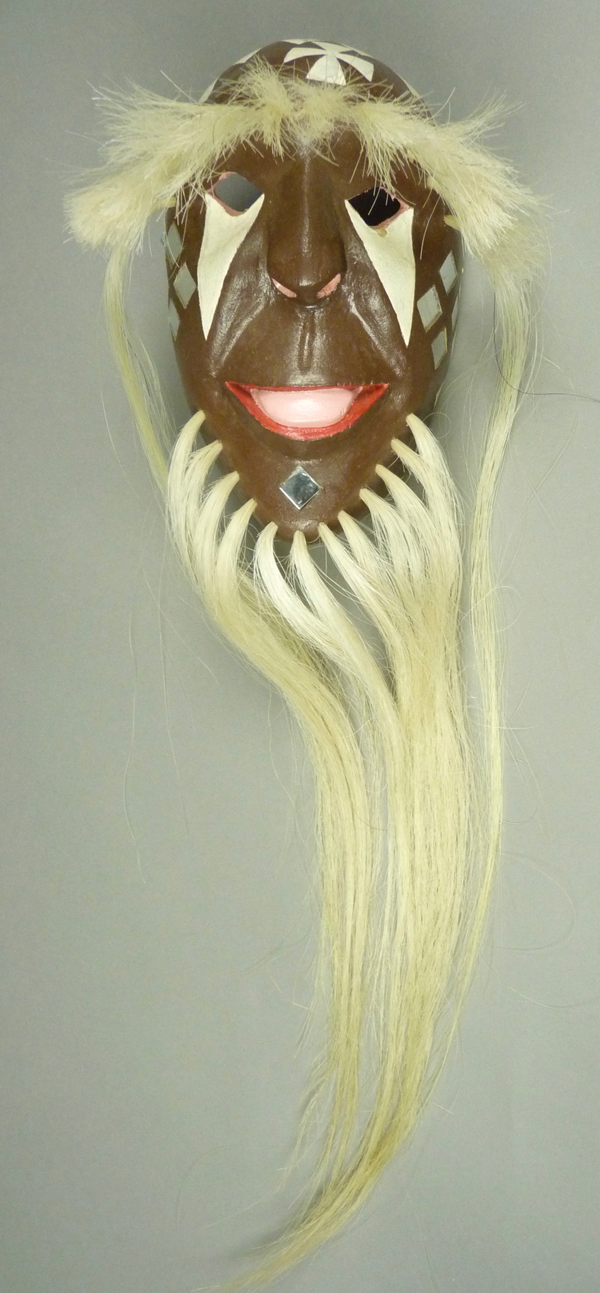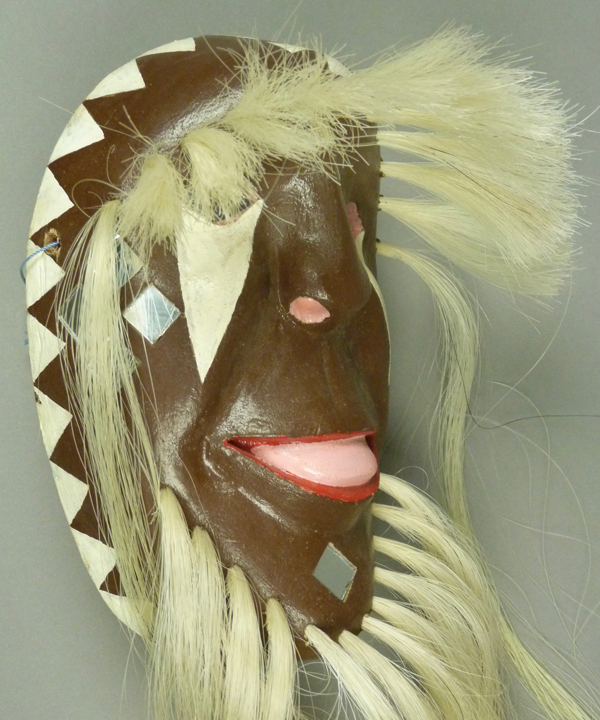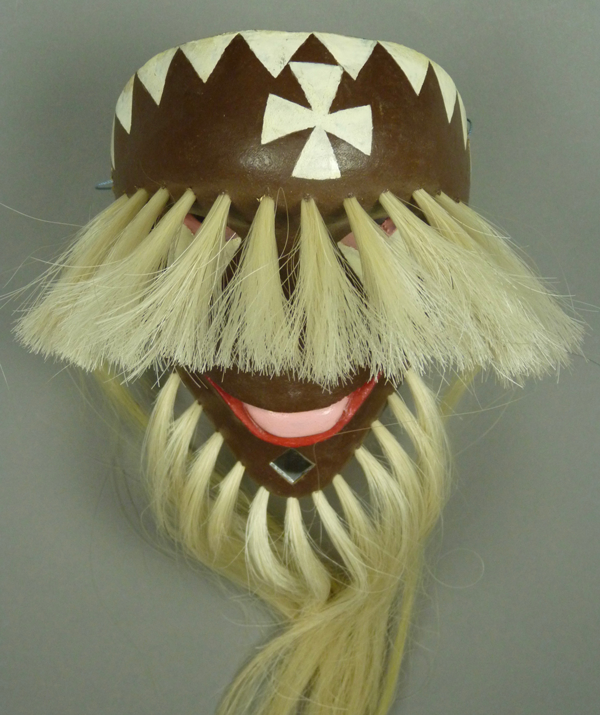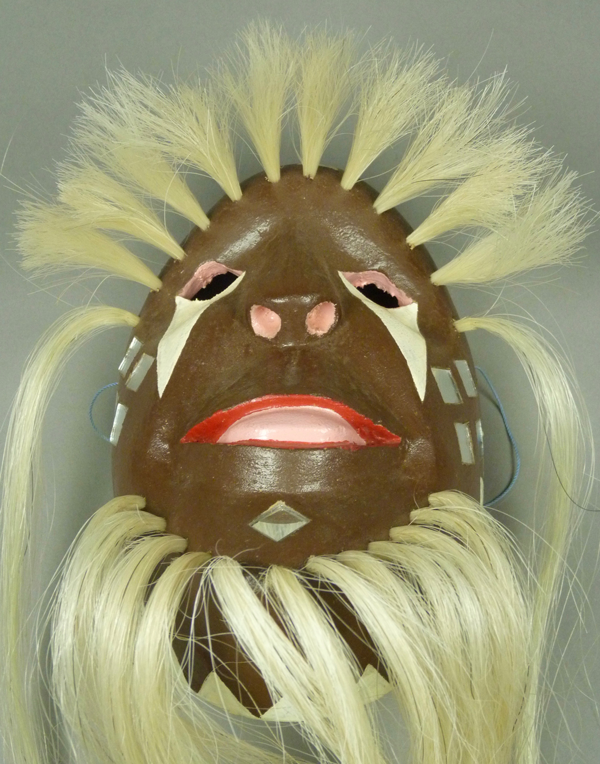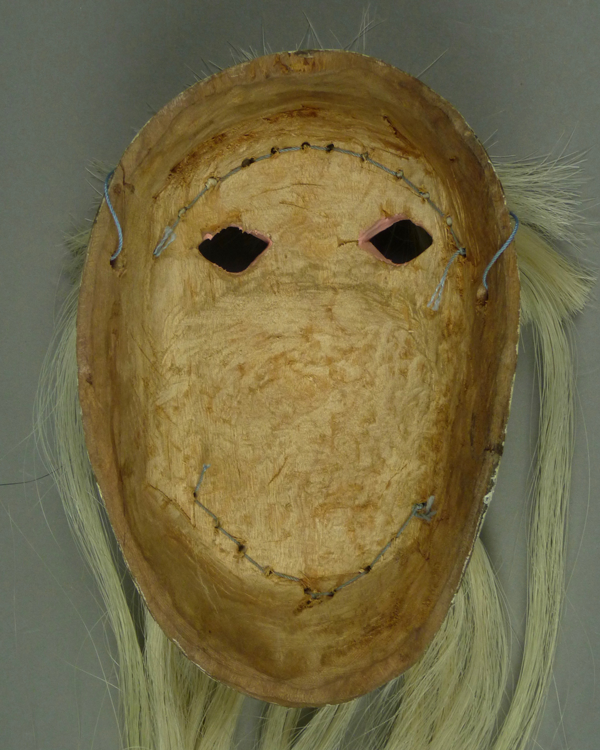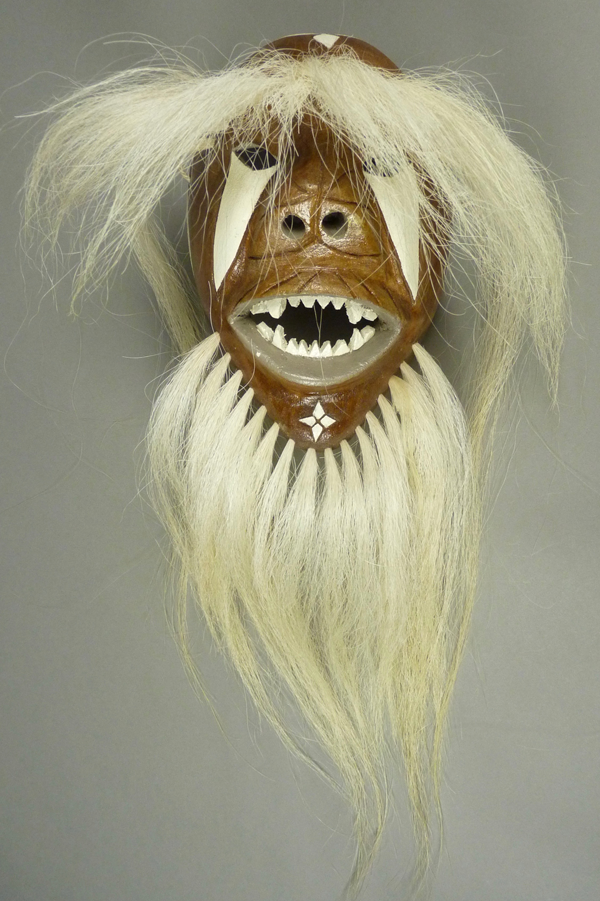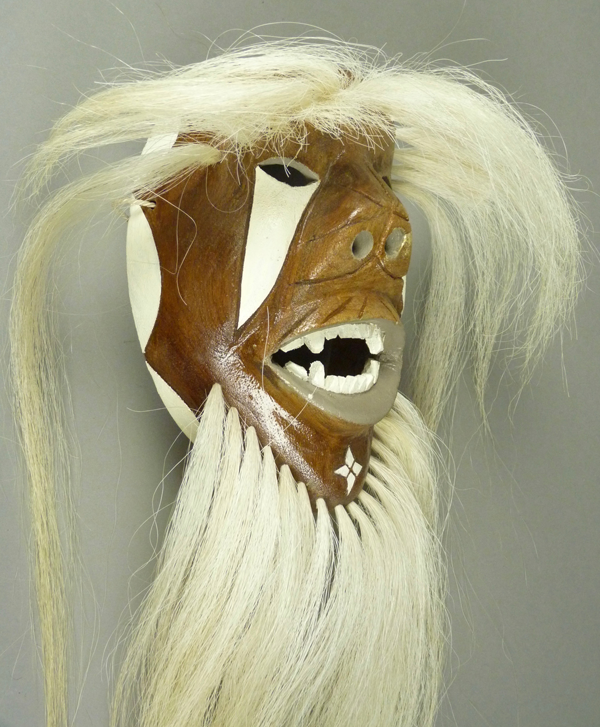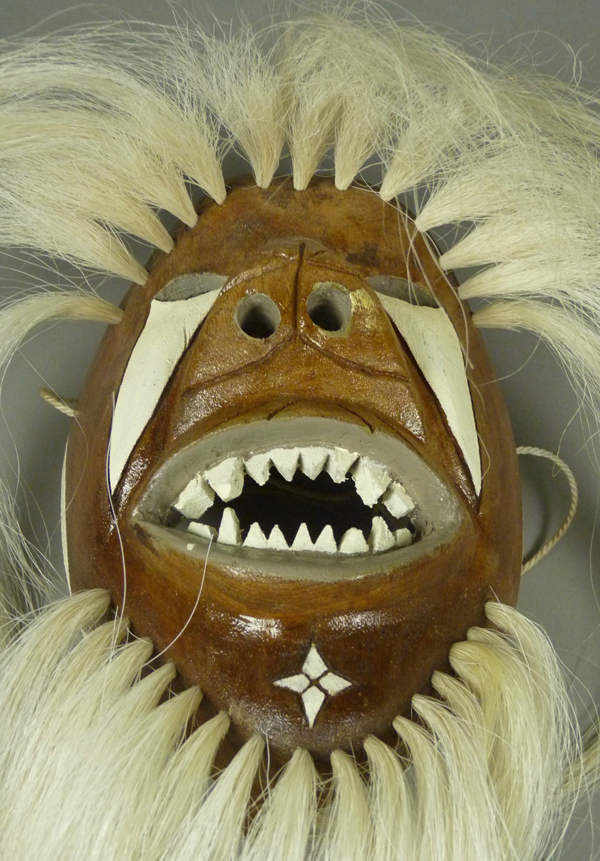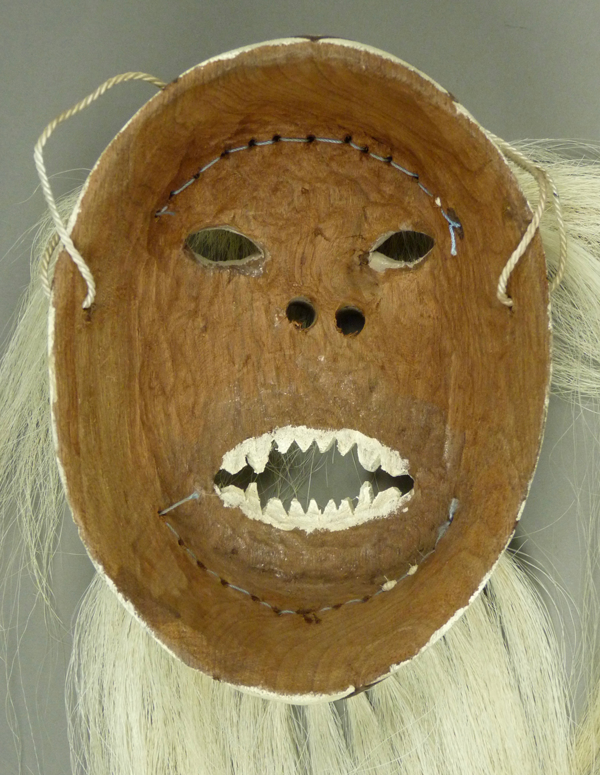Today I would like to begin with a few comments about my decision to collect all of these masks, even though most of them were new and undanced at the time of collection. In March of 1989 I examined the Yaqui and Mayo Pascola mask collections at the Heard Museum, in Phoenix Arizona. A few were very old and worn while others seemed not only new and unused, but also novel in design. I was allowed to take photos of these masks for my personal study, and over the years I would occasionally look them over. With experience and the passage of time, I became increasingly aware that these masks provided a priceless record of the arts and culture of these Peoples. On the one hand, the masks reflected aspects that were constantly changing and to some extent these changes seemed to reflect a quest for novelty. Yet to an educated eye, after my long study of Yaqui culture, these masks also revealed the persistence and continuity of this culture. New and undanced masks appeared to be such low-hanging fruit, inexpensive and artistically “sweet,” so I embraced this opportunity.
This week we will examine additional human faced masks by Crisencio Molina Maldonado that have have faces of red or brown color, rather than the more traditional black background color. Maybe these represent Indian faces?
I purchased the first three of these in 2006, from the Morning Star Traders™ gallery in Tucson, Arizona. This one appears to be the appropriate size for a child.
The rim design is unusually attractive. Otherwise this is a well carved and carefully painted Pascola mask that demonstrates Crisencio’s usual high standard for quality.
The mouths on Crisencio’s masks often have this abstract quality. The hair bundles are carefully applied.
A small cross (or sun symbol) on the chin echos a larger one on the forehead.
This mask is 7¼ inches tall, 5¼ inches wide, and 2¼ inches deep.
There is no staining from use. Someone had written Crisencio’s full name on the back.
This mask, which is taller and deeper, is the appropriate size for an adult dancer. Because of the nose design, I am uncertain whether this mask represents a human face or that of a Chango (gorilla or ape).
A notable design detail, which one also finds occasionally on the masks of several other Potam carvers such as Manuel Centella Escalante and Conrado Rodríguez Muñoz, is the use of narrow vision slits under the eyes. In this instance I find that I can see a lot through these openings, even though they look so small. In general, Crisencio’s masks are almost always carved to an appropriate level to promote use by a dancer.
The rim design, which is simple and attractive, is one of Crisencio’s favorites.
To my eyes, this is a gorilla nose. Think of King Kong™.
This mask is 7¾ inches tall, 5¼ inches wide, and 3¼ inches deep.
This undanced mask also has Crisencio’s name written on the back with a marker, just like the first mask.
The third of this trio from the Morning Star Traders gallery definitely has a human face.
The nose appears to be deliberately oversized. The lizards on the cheeks are depicted in motion (maybe scampering), which is a wonderful artistic touch. This reminds me to note that Pascola dancers are in constant motion, accompanied by melodic and rhythm instruments that drive their movements.
The cross on the chin is typical for Crisencio, while that on the forehead is unusual, for him and for other Potam carvers. To me it reinforces the duality of Yaqui Christianity, as this cross looks almost human in form, as if a representation of Christ as the “light of the world.”
There is an extraordinary number of hair bundles on this mask—24 on the brow and 30 around the chin!
Here is another view of this lizard dance. The mask is 7¼ inches tall, 5 inches wide, and 3¼ inches deep.
The lighting makes this look like a danced mask, but one doesn’t get this impression when holding it. The wood is simply dark in color.
The next set of photographs were taken by Tom Kolaz of a mask that remains in his collection. This is a Viejito mask, a mask with the wrinkled face of an old man. As I noted in an earlier post, Tom and I have worked closely together to support and encourage the work of Crisencio, because we greatly admire his talent. Over a period of years we purchased almost every mask that he brought to us. As a consequence of this, Tom has a surplus of masks by this carver, and he would be willing to sell some that he has, including this one that was heavily danced in traditional fiestas. Furthermore, Tom will probably have opportunities to find other masks by this carver, depending on someone’s interest. You can contact Tom by sending me a message to forward to him.
This is a terrific mask. It has great features that you have already seen on some of the other masks by this carver. I particularly like the way that the face of this mask narrows to an almost pointed chin.
The tongue is very well carved and almost appears to float in the mouth. The carved wrinkles on the face invade the painted spaces, just as actual wrinkles or scars would do.
In contrast to the large sun/cross on the forehead, the chin cross is small. It is composed of four plastic jewels.
This mask is 8 inches tall, 5¾ inches wide, and 4 inches deep.
This mask, which has been heavily danced, demonstrates differential staining from use, and it has its original leather strap. By differential staining, I mean that one can observe darkening and polishing of the wood on the inside rim at the forehead and chin, areas where there has been the greatest contact with the dancer’s skin. The close fit with the face around the rim prevented the face from having any contact with the deeper interior of the mask, so the wood is unstained there. A careful carver will shape the back of the mask in this manner, in order to protect the dancer’s eyes, nose, and mouth from uncomfortable contact with the back of the mask.
The next two masks, which I purchased with the assistance of Tom Kolaz in 2009, are notable for what appear to be inlaid mirrors. In fact these small reflective squares were cut by Crisencio from recycled plastic compact disks. Again I wonder if these brown faced masks represent Indians. Then the use of yellow might signal warpaint.
This is another typical well carved Crisencio mask.
The faceted smaller inlaid squares are commercial imitation plastic jewels.
The forehead cross has been constructed from these inlaid cut squares, which is a poetic approach to the creation of a cross that simultaneously represents the sun and reflects light.
This mask is 8 inches tall, 5½ inches wide, and 3½ inches deep.
The undanced back is typical of Centella’s hand.
Here is the second mask with inlaid reflective plastic squares that Crisencio cut from commercial compact discs. Your eyes aren’t playing tricks; this mask turns out to be a bit crooked, as if the wearer is slouching. I doubt that this was deliberate, having seen so many asymmetrical masks over the years, but who knows?
In this instance there are crosses on the cheeks that were constructed from these mirrored squares.
This forehead cross follows Crisencio’s typical design. The extended tongue gives this mask a jocular appearance.
The hair bundles are not numerous, but they are thick.
This mask is 8 inches tall, 5 inches wide, and 2¾ inches deep.
Here is another normal back, but in this case the rim appears to be stained from use. As I will further demonstrate in a later post, this appearance of wear is an illusion created by the contrasting colors of heartwood and sapwood. I purchased it as a new and undanced mask.
Last week I showed you a somewhat mysterious mask that looked like an ape, but Crisencio described it as a being from the Yoania that was in the process of transformation into a human form. Because of it’s transitional status it had no cross. This next mask is similarly mysterious. It looks like a gorilla but I recall that Crisencio told Tom Kolaz it represented something else. This mask has a forehead cross, in fact it has the variant cross that we saw in green paint on the mask in last week’s post that had glitter to represent confetti.
We see that same cross in miniature on the chin.
The hair on the forehead has been deliberately left long and disheveled, as if to label this being as something wild, but what is it?
The hair bundles are thick and numerous on this mask.
This mask is 8½ inches tall, 6 inches wide, and 3½ inches deep.
This mask looks to have been carved for a large face. As with the last mask, the dark color of this mask comes from the original wood and does not reflect staining from use.
The last carving in today’s post is not an actual mask, but a maskette. These miniature masks are meant to be displayed rather than worn, and one sometimes finds them dangling from the rear view mirror of a Yaqui’s pickup truck, so it could be said that they have that cultural purpose. This one has an “Apache” face, with “war paint” and a colorful headband. This is the only maskette by Crisencio that I have ever seen.
This maskette is 7½ inches tall, 5 inches wide, and 2 inches in thickness. It was carved from a single two inch thick block, even though it has the appearance of have been made from two pieces.
The back has a shallow depression that is barely apparent in this photo, and of course there are no holes for vision. The two small ties hold the hair tufts, and the hanging loop passes through a slanting hole to emerge at a lower level through the back, between those ties.
Next week we will see some Goat Pascola masks made by Crisencio.

